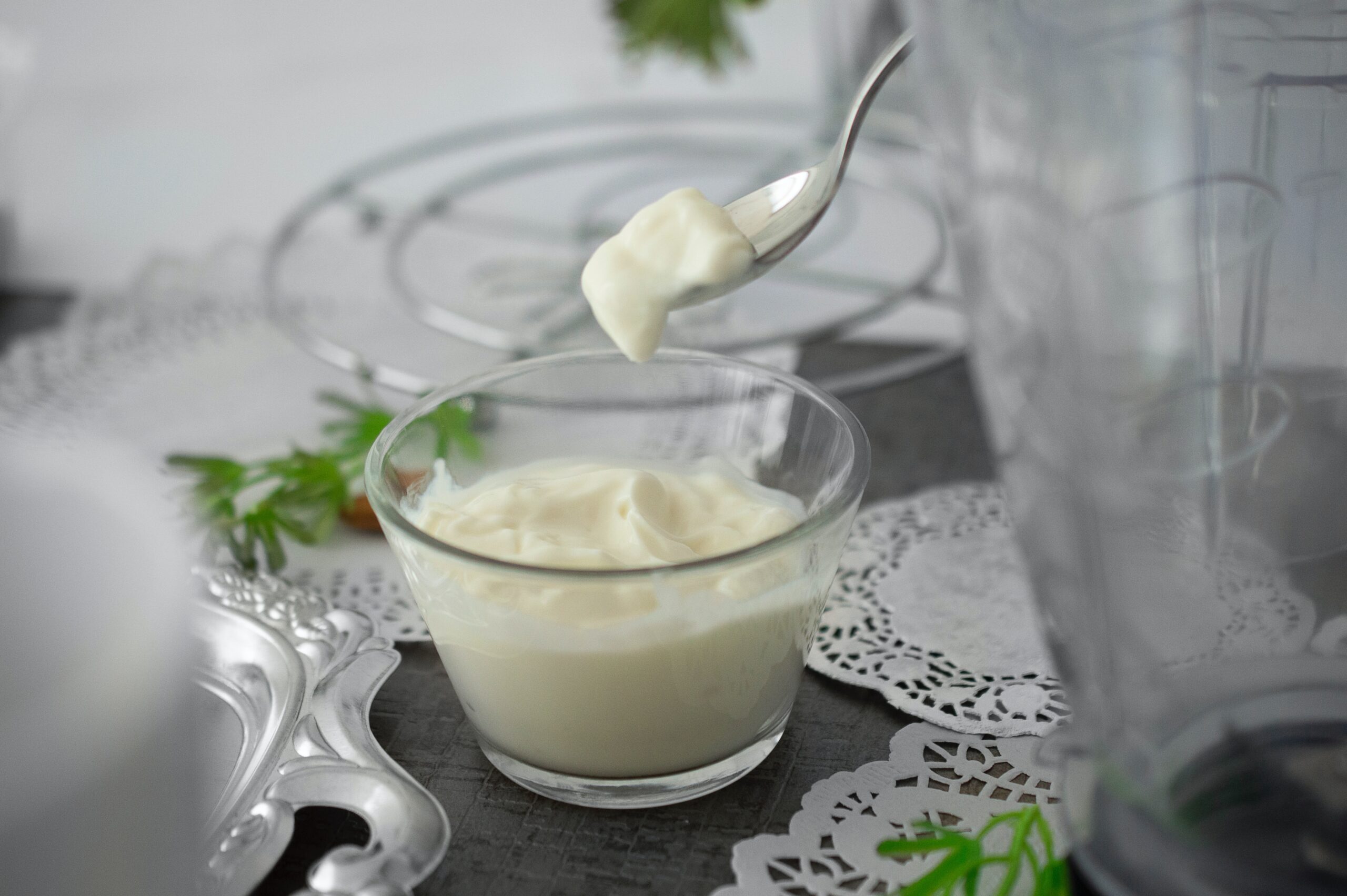
Ingredients
- 1 large egg at room temperature
- 1 tablespoon Dijon mustard
- 1 tablespoon white wine vinegar
- 1/2 teaspoon salt
- 1/4 teaspoon sugar optional, for a slightly sweeter taste
- 1 cup neutral-flavored oil such as vegetable or canola oil
- 1-2 teaspoons lemon juice adjust to taste
Instructions
Prepare Your Equipment:
-
Ensure that all your equipment is clean and dry. You'll need a mixing bowl, a whisk or an electric hand mixer, and a container for storing the mayonnaise.
Combine Egg, Mustard, Vinegar, Salt, and Sugar:
-
Crack the egg into the mixing bowl. Add the Dijon mustard, white wine vinegar, salt, and sugar (if using). Whisk these ingredients together until well combined.
Slowly Add Oil:
-
This step is crucial for the emulsification process. Start whisking vigorously while continuously adding a few drops of oil at a time. You can also use an electric hand mixer on low speed.
-
As the mixture thickens and becomes smooth, you can gradually increase the oil flow to a thin stream instead of drops. Continue to whisk or mix until all the oil is incorporated. This should take about 5-7 minutes.
Adjust Consistency and Flavor:
-
Taste the mayonnaise and adjust the flavor to your liking. If you prefer it tangier, add a bit more white wine vinegar. For extra acidity and a hint of freshness, add lemon juice a teaspoon at a time.
-
If the mayonnaise is too thick for your preference, you can thin it out with a teaspoon of water and whisk until you achieve the desired consistency.
Store Your Homemade Mayonnaise:
-
Transfer the freshly made mayonnaise to a clean and airtight container. Seal it well to prevent air from getting in, which can cause the mayonnaise to spoil.
-
Store it in the refrigerator for up to one week. Always check for any signs of spoilage, such as an off smell or unusual texture, before using.
Enjoy!
-
Your homemade mayonnaise is now ready to be used in salads, sandwiches, dressings, and dips. It's a versatile condiment that can elevate the flavors of many dishes.
Recipe Notes
- Make sure your egg is at room temperature, which helps with emulsification.
- Use fresh eggs from a reliable source to minimize the risk of foodborne illness.
- If you're concerned about using raw egg, you can use pasteurized eggs or pasteurized egg yolks.
- Experiment with different oils like olive oil or avocado oil to vary the flavor of your homemade mayonnaise.
- To create flavored mayonnaise, add ingredients like minced garlic, fresh herbs, or hot sauce to the mixture after you've achieved the basic mayonnaise consistency.




